Beijing Winter Olympics entered the countdown.
After being dormant for three seasons, skiers finally ushered in a grand skiing season.
More exciting than skiers are entrepreneurs related to the ski industry, who predict that the ski industry will usher in golden decade in the post-Winter Olympics era. According to the development plan of ice and snow sports, the total scale of China’s ice and snow industry will reach one trillion yuan in 2025.
However, as the skiing equipment just needed for skiing, it is expensive, which makes many friends who try to enter the circle discouraged and choose to change their hobbies. According to research statistics, ski equipment is indeed the project with the highest gross profit margin in the ski industry chain.
Is the ski equipment that burns money a good nugget market?
Skiing is addictive and burns money.
This is an exciting and challenging ice and snow sport. In the world of white clothes, every skier on the ski resort can fly freely and feel the speed and passion; Also in the ultimate concentration, harvest inner peace.
As a sport that requires high hardware facilities, skiing is quite expensive. Ski resorts, perfect supporting facilities, early teaching and training, personal equipment and convenient transportation all need certain economic conditions as support.
Taking personal equipment as an example, it is calculated according to the price range table of major brands compiled by EqualOcean.A set of primary ski equipment including ski suit, snowboard, ski pole and ski shoes costs between 3,000 and 10,000 yuan; And a skier, a set of top equipment from head to toe is more than 60 thousand yuan.If you are keen on buying joint models and limited models, the price will have to double.
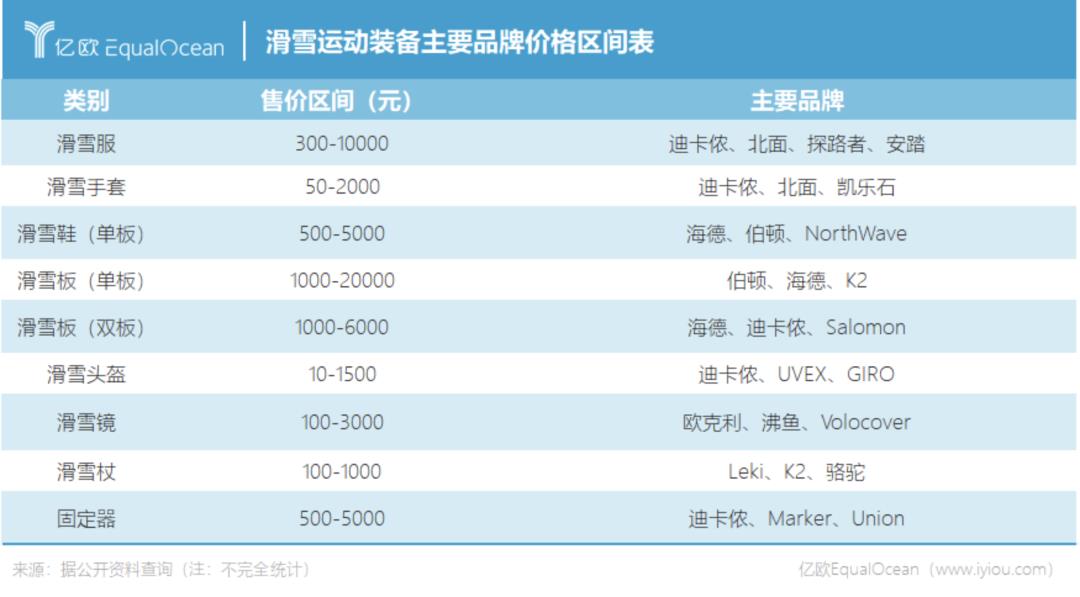
The high unit price supports the profitability of ski equipment. According to data from Mob Research Institute,The gross profit margin of snowboards and ski suits in ski equipment is about 40%-50%.The gross profit margin of helmets and snow goggles can reach 70%;The gross profit margin of ski resort is about 15%, the gross profit margin of ski training is 30%-35%, and the gross profit margin of ski resort construction equipment is between 25%-35%.
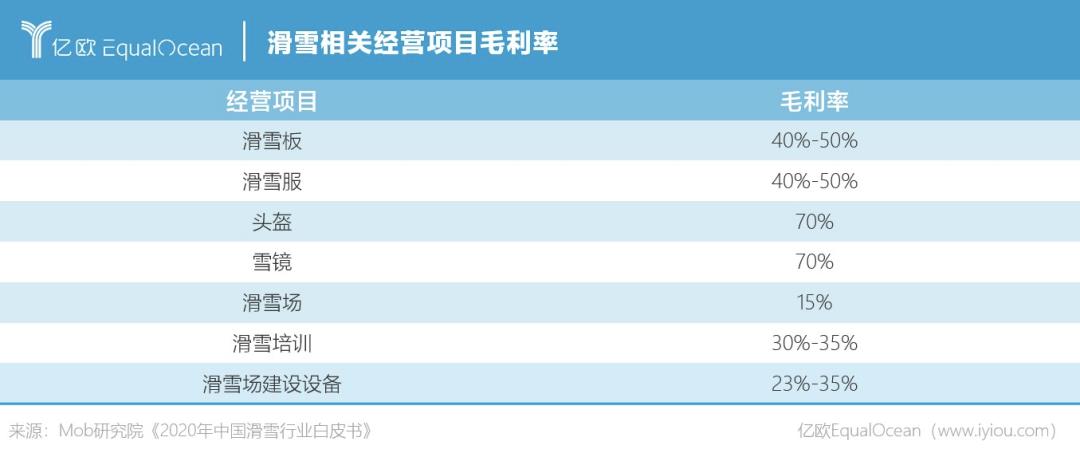
Ski equipment is sold to individuals and to ski resorts respectively, and the gross profit margin is different. The profitability of the C-end far exceeds that of the B-end. According to the data of Toubao Research Institute, the gross profit margin of imported skis sold to ski resorts is 20%-25%, and the gross profit margin of individual sales can reach 50%. The gross profit margin of selling snow clothes, helmets and snow goggles to the snow field is about 30%-40%, and that of selling to individuals is 70%-80%.
The "aristocratic" movement lives up to its reputation. According to data from Mob Research Institute,At present, skiers in China are mainly male middle-and high-income groups in first-and second-tier cities, with the age of 25-34 and the monthly income of over 10K.
Even if you have enough economic strength, you can’t ski at will. Skiing is seasonal and restricted by the venue. Even in winter, you can find venues around your home or city when you want to ski. Sometimes you need to take a car, drive by car or even fly to other cities and countries.
Limited by economic conditions, venues and seasons, the number of skiers in China is less, and most of them are skiers. According to the data of White Paper on Ski Industry in China,In 2019, the number of skiers in China was 20.9 million, of which 77.4% experienced skiers, and the average number of skiers per year was no more than two.

A large number of people who only skate once or twice a year prefer to rent equipment in the snow field, and it is difficult to form purchasing power. Therefore, although the unit price of ski equipment is high, it is a typical niche market.
The Research Report on the Development of Ice and Snow Industry in China shows that in 2020, the total scale of China’s ice and snow industry has reached 600 billion yuan. According to the data of Zhiyan Consulting, under the huge ice and snow market scale, the ski market in China will be about 83.56 billion yuan in 2020, and it will be subdivided into the ski equipment market with a scale of about 12.69 billion yuan.
With the approach of the Winter Olympics, there have been several "skiing craze" in China in recent years.
Actually, skiing in China started late, and the third Asian Winter Games was held in 1996, which was the beginning of skiing in China. In France, there were 45,000 skiers in 1950; In Japan, the skiing craze rose in the 1960s. In 1980, nearly 30% of Japanese men aged 20-24 participated in skiing.
Taking the Winter Olympics as an opportunity, many enterprises have begun to lay out the ice and snow industry in China in recent years. Equipment with strong profitability and as a necessity for skiing has become one of the choices in the market.
According to Tianyancha data, since 2015, the number of registered enterprises with "skiing" has increased significantly. In 2019, the number of registered enterprises exceeded 1,000, and currently there are more than 6,400. As a ski equipment in a niche market, there are more than 40 related companies.
Enterprises operating ski equipment can be divided into three categories, the first isComprehensive sportswear enterprises such as Pathfinder, Anta and 361,Starting with the layout of ski costumes;Cabin skiing, as the representative, not only provides personal skiing equipment, but also includes ski resort equipment.Such as ice machines, snow-pressing vehicles, snow-making machines, snowmobiles, lighting systems, etc. In addition, there are someEnterprises that focus on making personal ski equipment brands, such as running river, Zero Summer, Vector, etc.
However, the domestic ski equipment market is still in a very early stage compared with foreign countries. Wu Bin, vice chairman of Beijing Ski Association and president of Cabin Ski, once said,Due to the late start of China’s ski industry, there is still a big gap between the manufacturing technology and product quality of domestic ski equipment manufacturers and foreign famous brands.
Liu Fengxi, the founder and &CEO of Zero Summer, told Yiou EqualOcean that the source of skiing equipment in China is mainly snow fields and factories that produce skis, and there is a lack of core talents in R&D and design. Taking advantage of the "skiing fever" in the Winter Olympics, many enterprises that have never dabbled in skiing equipment have started to make skiing equipment, but most of them are directly produced by using the existing molds in the factory, which is not able to meet the needs of skiers for snowboarding performance at different stages.
Skiing requires high quality ski equipment,Domestic skiers are more inclined to buy high-end ski equipment of imported brands.
Take veneer as an example, Burton, an American outdoor skiing brand, has a market share of 30%-40% in China, and the price is usually around 10,000 yuan. In the alpine skiing, snowboarding and freestyle skiing events of the 13th National Winter Games, the contestants from all over the country basically used imported ski equipment from snowboards, snowshoes, fixers, helmets and leggings. The top ten ski brands on the China brand network are also foreign brands.
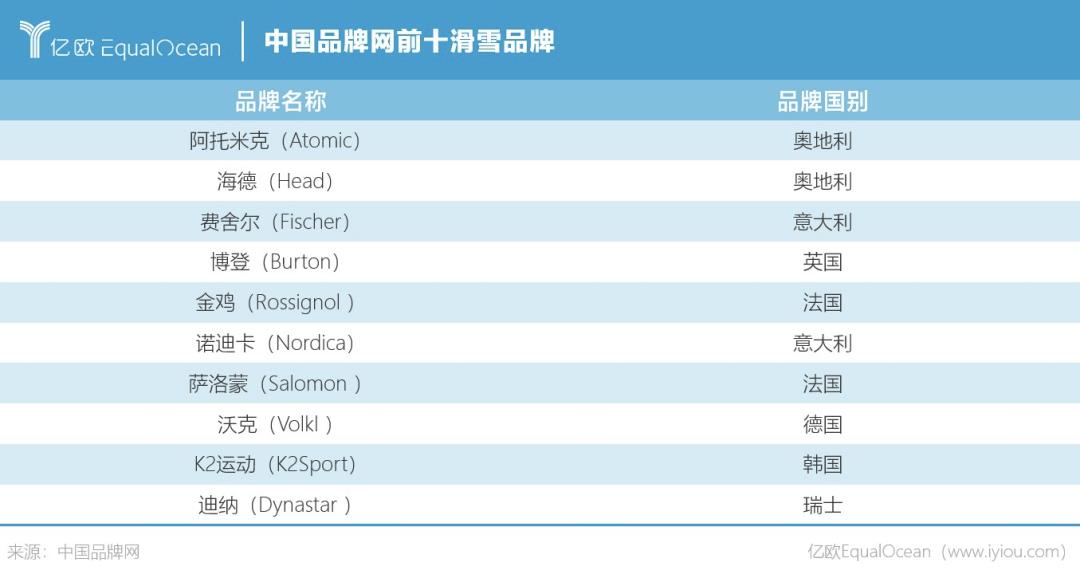
A skier goes from an experiencer to an enthusiast, and finally to an enthusiast. With the progress of skiing technology, the requirements for skiing equipment will become higher and higher, and it will often go through the process from renting to purchasing, and then from entry to high-end.
The ski equipment that can be rented in the ski resort is more just the choice of novice experience. Some skiers said to Yiou EqualOcean, "The rented things will take only one snow season, and the next snow season will feel that they can’t keep up with your level."
When you are fascinated by skiing, a set of self-purchased primary equipment can’t meet the demand. "Many people are eager to throw away their previous primary boards after they are advanced" and "the budget is at least 5000+, which is considered to be out of the ski field".
What’s the difference between a less satisfactory set of equipment and an excellent set of skiing equipment?
From the user’s point of view,"You get what you pay for, and the imported snowshoes are the difference between the slippers in the bathhouse and your running shoes."Some people are so figurative.
Once skiing in into the pit,"integration of human and board"The realm of snow friends has become the direction of continuous exploration. "Bad equipment will affect your progress, and you can’t feel the feedback from snowboards and snowshoes."
For snow friends who like to play handsome and shoot videos, the appearance and design of some domestic brands have also been spit out. "Domestic brands also have good quality, butSkiing can’t just consider the role of protection, everyone wants to dress more handsome. "
In Liu Fengxi’s view, domestic brands and foreign brands cannot be unilaterally distinguished. The key is to do a good job in products.
He believes that there is a social division of labor in the whole market, and domestic and foreign countries are not completely independent. For example, the small blackboard in zero summer, 90% of the raw materials are imported, the design and development team is in Seattle, looking for a China foundry to produce, and the boss is from China; Both Philae and Archaeopteryx were acquired by Anta. In fact, it is difficult to define whether they are made in China.
China is the world’s foundry,"Almost all ski brands you can see and hear, especially veneers, are Made in China",But "there are the best factories in China and the worst factories in China. The same factory can produce the best things in the world and the worst things".
For related enterprises, the gap between skiing equipment has been widened as early as the initial stage of research and development. This is a highly personalized sport, and brands will inject their understanding of skiing into their products.
As an enthusiast who started skiing in 2002 and skied around the world for two or three hundred days a year at the craziest time, Liu Fengxi has seen different people, different ways of playing, different brands and equipment. The biggest feeling is that,There is a problem of vision in making ski equipment. It is not simply a product, but an understanding and love of skiing, and more professional knowledge is needed.
Take snowboarding as an example. It takes at least two years for a complete snowboard to come out. In the early stage, we need a lot of experimental data, drawing and developing molds, and in the later stage, we need a lot of time to test on the snowy road and collect feedback to revise and adjust raw materials, molds and specific parameters.
Max Parrot, a new Olympic silver medalist who signed a contract with Nobaday, tested his snowboard for nearly 100 times. Through constant experience feedback, he made a series of adjustments in design and raw materials to achieve his satisfactory competition state.
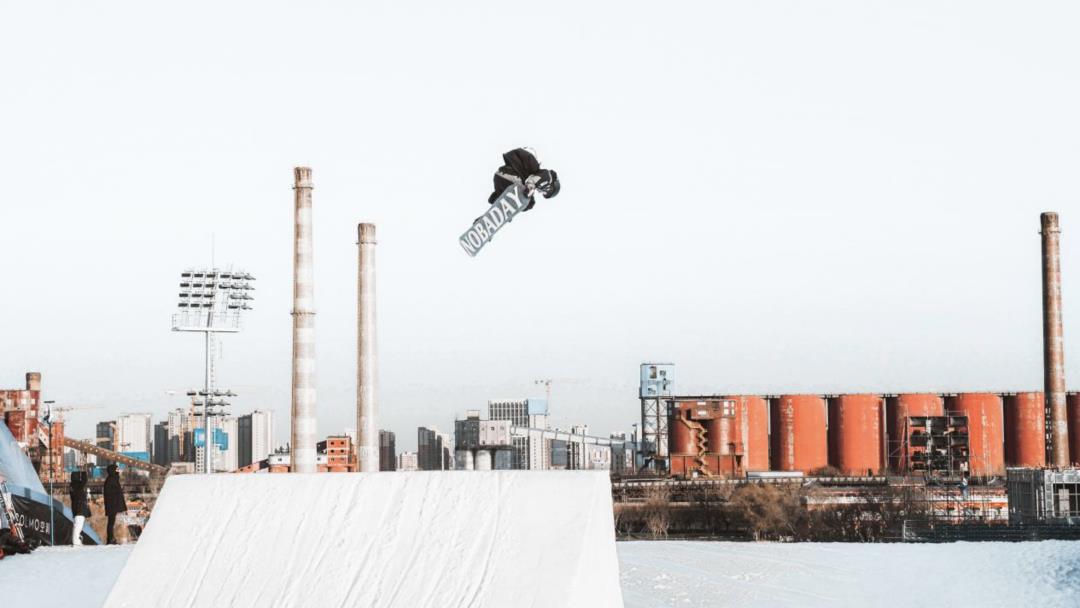
Source: Zero Summer Official Authorization
Nicole Ning, who is responsible for the development of Pathfinder’s ski product line, once said: "There are not many talents who are proficient in skiing, materials science and fashion design in China, but there are many big brands abroad, such as TNF and Archaeopteryx." Therefore, the designers of the Pathfinder ski project should snow for a certain period of time every winter to experience their own products, observe what clothes people around them wear, and exchange ski culture and product experience with the big coffee in the ski circle.
"Maybe the practice of each brand will be different, but it takes a lot of time, energy, financial resources and material resources to really do ski equipment well." Liu fengxi said.
In addition to the understanding of skiing, a lot of research and development, design and testing in the early stage,Establishing brand recognition in consumers’ minds is also a compulsory course for ski equipment enterprises.
An expert who has been operating in the ice and snow equipment industry for seven years said that in fact, the related technologies of ice and snow equipment have been localized, and China is not without excellent ski equipment.
Take snowboarding as an example. Snowboards imported from China and Europe use the same production line. Because China enterprises do OEM production for imported brands of snowboards, the raw materials, technology and quality used by domestic snowboards are no different from those of imported brands, but consumers’ recognition is low, resulting in the price of domestic brands being about 30% lower than that of imported brands.
Many foreign brands originated from a certain sport, such as lululemon’s yoga clothes, Archaeopteryx’s jacket and Burton’s ski suit, while domestic brands have a relatively broad positioning. Pushing the door open is called outdoor, and closing the door is indoor.
People who like climbing, hiking and skiing are not the same kind of people and have different equipment. "If you can’t make a yoga suit, it is a yoga brand. If you make a ski suit, it is a ski brand. Users’ understanding of the brand will only become vague and not specific." Liu fengxi believes.
Ski equipment brands should enhance users’ core perception, bind with a relatively vertically subdivided sport, and create core equipment for them as brand endorsement.
In skiing, a good ski suit is helpful to athletes, but it doesn’t play a decisive role. In order to make achievements, athletes have to rely on the core hardware to equip snowboards, fixers and snowshoes. This is like the difference between a racer’s racing suit and a car. In skiing, skis, fixers and snowshoes are that car.
However, even if Anta, the sponsor of the Winter Olympics, cuts into ski equipment with ski clothes, and there is still room for improvement in the ski core equipment.
Skiing, which is called "aristocratic" sport in China, has basically become synonymous with winter sports in Europe, America, Japan and South Korea.
According to the Report on the Development of Ski Industry in China, the population penetration rate of ski market in China is only 1%, which is far from the 35% in Switzerland, the largest Nordic skiing country in the world, and also lags far behind the 9% in Japan and 8% in the United States. This also means that there is still much room for improvement in China’s ski-related industries.
Taking the Winter Olympics as an opportunity, the State Sports General Administration put forward the goal of "300 million people on the ice and snow".
Liu fengxi explained,The goal of "300 million people on ice and snow" is well-founded., not groundless. Referring to the developed countries such as the United States, Japan, Switzerland, Austria, France, Canada, etc., the total skiing population basically accounts for about 10%-30% of the total national population, and there are about 1.4 billion people in China, which is almost 300 million people based on the average ratio of 20% in developed countries.
Before 2015, the domestic ice and snow industry grew almost savagely. In 2015, Beijing successfully bid for the Winter Olympics, and the state issued a series of policies to promote the development of the industry.
During 2016-2020, the state and local governments promulgated the Development Plan for Ice and Snow Sports (2016-2025), the Popularization Plan for Mass Winter Sports (2016-2020), the National Construction Plan for Ice and Snow Facilities (2016-2022) and the National Measures for the Administration of Winter Sports Competitions (for Trial Implementation).
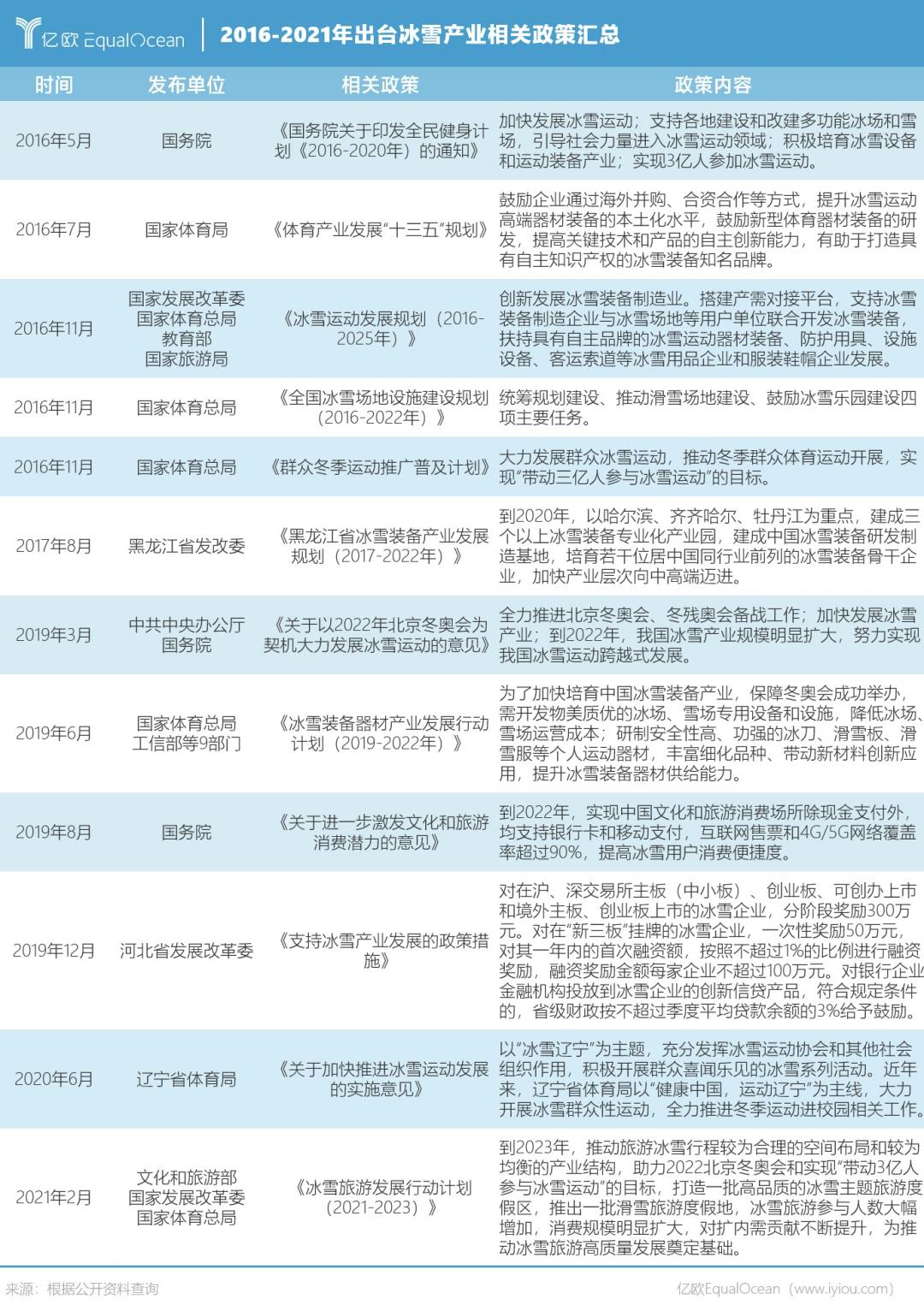
The United States has hosted four Winter Olympics and Japan has hosted two Winter Olympics.Every "post-Winter Olympics" era has brought a very large increase in the number of skiers, the improvement of hardware facilities and the improvement of basic service capabilities.
After Beijing’s successful bid to host the Winter Olympics, entrepreneurs and investors were moved by the wind, and many emerging entrepreneurial projects were favored by investors, such as zero summer, skiing, skiing, and Vector, covering the entire ski industry chain, including ski equipment, ski training, ski information, and ski services.
The approaching of the Beijing Winter Olympics has obviously brought about a wave of skiing craze.
In 2020, the amount of skiing-related notes published in the lifestyle community Little Red Book increased by 89% year-on-year; In late November of that year, the search volume related to skiing content increased by 150% year-on-year, and the release volume increased by 300% year-on-year.
According to the "2020 Winter New Vitality Life Trend Report" released by CBNData and Tmall Sports, from November to December, 2020, the sales of ski equipment increased by 1300% year-on-year, and domestic emerging brands such as Nanen, Vector and Nobaday entered the "Top 10 brands that love ice and snow in the Z era".
Without the maturity of infrastructure, there will be no real skiing craze, and the hosting of the Winter Olympics has become the target node of many infrastructure construction in China. From 2014 to 2019, the number of ski resorts in China increased from 460 to 770. In 2020, affected by the epidemic, there were 715 ski resorts operating normally.
The supporting facilities around the ski resort are also constantly improving, and we try to break through the seasonal restrictions of skiing to achieve all-season operation. In the non-snow season, we operate cross-country mountain bikes, real-life CS and other projects, and develop into an ice and snow town integrating tourism, entertainment, commerce and real estate.
Yu Jingming, the founder of Le Dian Skiing, pointed out that if we look at the development of Chongli, we will know that the changes in the ski resort are amazing. Now we simply can’t see that it used to be a poor county. When Wanlong opened its business, it didn’t even have a hanging box, and now its hardware and services are close to the Japanese level.
However, this is only the beginning. Before the successful hosting of the Winter Olympics, the market was more eager to lay out infrastructure such as snow fields and improve transportation hotels and other supporting facilities. Liu Fengxi said,After 2022, we will welcome the golden decade of skiing industry.
The ski industry is welcoming golden decade. Is the ski equipment expected to become a mass market from a niche market?
The International Snow Federation defines the difference between skiers and enthusiasts by two criteria: first, whether it has its own equipment, and second, whether it has the frequency of skiing in ski resorts for 5 times or more every year.
In China, where there are many skiers, the first piece of equipment for many skiers has not been solved, and "at least 15 pieces of equipment are needed to really experience skiing".Liu Fengxi said that the current market is still in the stage of low conversion rate, and many skiers ski once a year, making it difficult to form purchasing power.
The ski equipment market should ride the wind of "300 million people on ice and snow", and the key is to improve the conversion rate.Let more people get on the ice and snow, turn more skiers into skiers, and the demand for equipment is gradually increasing. This requires the promotion of the general environment, the improvement of venues and supporting facilities, and the improvement of national consumption level.
China Ski Industry Development Report predicts that by 2022, the number of skiers is expected to rise to 45 million, and the ski retail equipment market in China will reach 45 billion yuan. This is still a niche market.
However, there is no small market, only small brands. Ski equipment has the characteristics of just need, high profit and growth. A brand widely accepted and recognized by consumers is far more useful than the scale of 100 billion and the space of one trillion.
关于作者